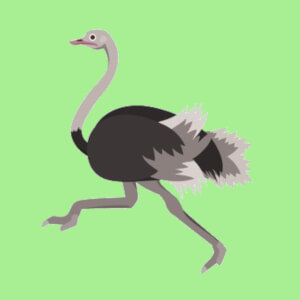


Birds are a diverse group of warm-blooded vertebrates with feathers, toothless beaks, and hard-shelled eggs, belonging to the class Aves. Today, scientists estimate that there are over 10,000 different species of birds found all over the world, from the tiniest hummingbird to the giant ostrich, which can grow up to 2.75 meters tall.
| Taxonomic Rank | Name | Common Name |
|---|---|---|
| Kingdom | Animalia | Animals |
| Phylum | Chordata | Vertebrates |
| Class | Aves | Birds |
One of the most unique features of birds is their ability to fly, which they achieve through their lightweight skeletons and powerful wing muscles. However, not all birds can fly—some, like penguins and ostriches, have evolved to be expert swimmers or runners instead.
In addition to their physical adaptations, birds also have complex social behaviors and are known for their beautiful songs and elaborate courtship displays. They play important roles in many ecosystems, helping to pollinate plants, control pests, and even spread seeds.
| Language | Sounds Like... |
|---|---|
| Dutch | Tjiep |
| English | Tweet |
| French | Cui-cui |
| Greek | Tsiou-tsiou |
| Language | Sounds Like... |
|---|---|
| Italian | Chip |
| Japanese | Chun-chun |
| Turkish | Jick-jick |
| Spanish | Pio-pio |
| Swedish | Pip-pip |
Studies have repeatedly shown that ravens, crows, and other birds in the corvid family are capable of puzzle-solving and tool use, abilities that were once thought to be unique to primates. One experiment conducted by researchers at Lund University in Sweden even found that ravens understand how to plan for future events, anticipating the need for tools in order to obtain a food reward.
In order to find better feeding or breeding conditions, many birds travel long distances, with some species flying over 10,000 km (6,000 miles) each way.
Birds have evolved really neat adaptations to help them along the way, such as the ability to navigate using the stars, Earth's magnetic field, or landmarks like rivers and mountains. Migrating birds also play a crucial role in the balance of ecosystems by helping to disperse seeds and pollinate plants across large distances, which helps to maintain genetic diversity of plant populations.
Ostriches are adapted for survival in the harsh and arid environments of Africa, where they inhabit grasslands, savannas, and desert regions. The flightless birds can grow up to 2.75 meters (9 feet) tall and weigh up to 160 kg (350 lbs), making them the largest birds on the planet.
Their eyes are the largest of any land animal, measuring about the size of billiard balls, and their eggs are the largest of any bird, with masses up to 1.4 kg (3 lbs), capable of supporting the weight of a human. Lastly, ostriches can run up to 97 kph (60 mph), using their long, powerful legs to outrun predators or catch up with their flock.
Birds have adapted to flight by developing lightweight, strong, and efficient bodies. Unlike the dense bones found in humans and other animals, birds' bones are thin and light, with air spaces inside that help reduce weight while maintaining strength. The bones are also reinforced with a network of internal struts and cross-braces that add extra support where needed.
Having hollow bones isn't just good for flying, though. It also helps birds conserve energy. By having a lighter skeleton, birds can take off and stay aloft with less effort and use less energy when flying long distances. This allows them to cover large areas in search of food, avoid predators, and migrate to new habitats.
Hummingbird wings are unique from other birds in that they can move in a figure-eight pattern, generating lift on the downstroke and the upstroke. This allows them to maintain a stationary position in midair or fly backwards with exceptional control. Bats, which are not birds but mammals, are the only other animal on Earth capable of such a feat.
To hover, hummingbirds have to beat their wings rapidly, up to 80 times per second in some species. This requires an immense amount of energy, and hummingbirds have some unique adaptations to support their high metabolic needs. For instance, they have a specialized tongue that can extend out of their beak to collect nectar from flowers. They also have a large heart relative to their size, which allows them to pump oxygen-rich blood to their muscles at a fast rate.